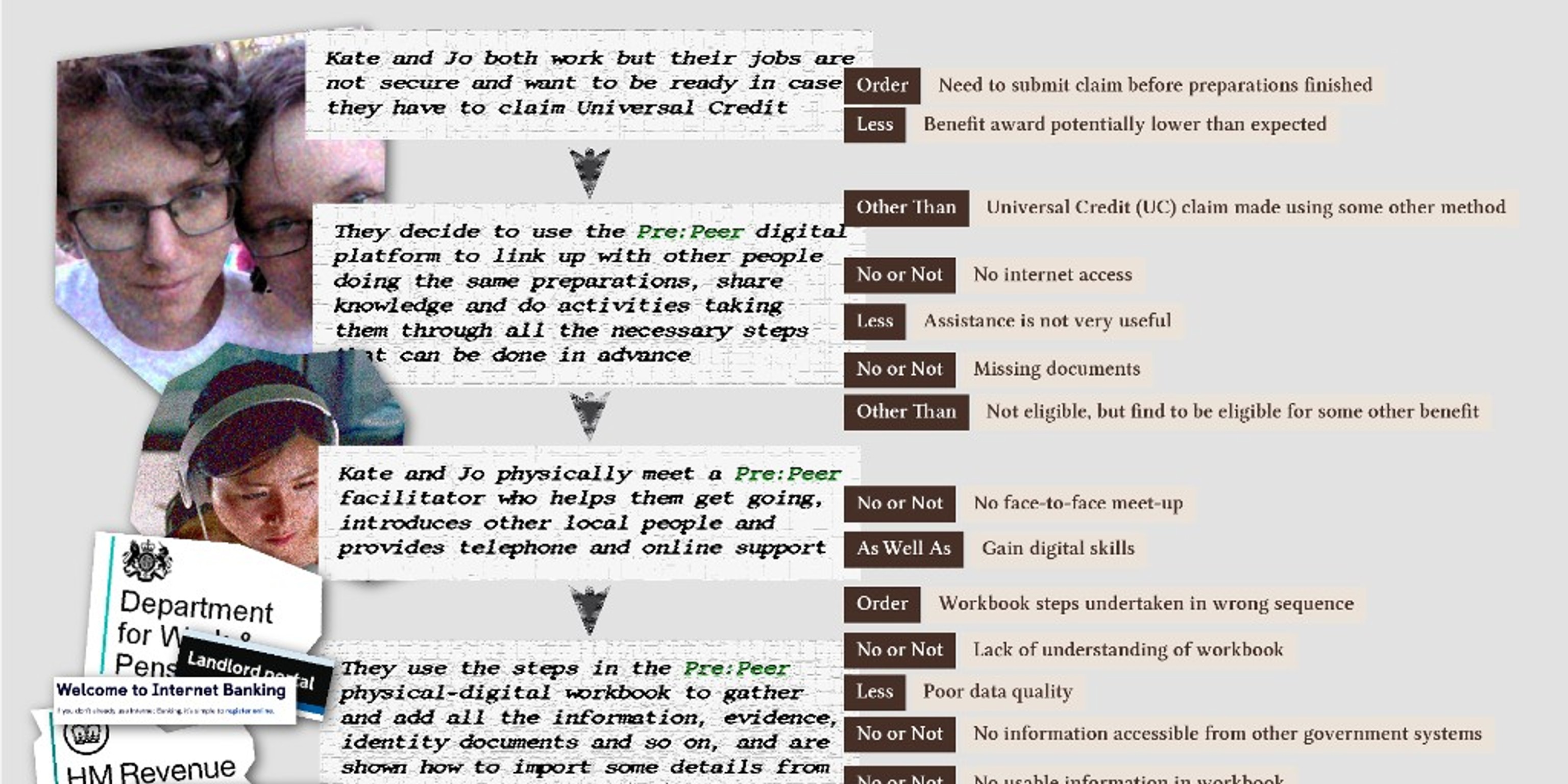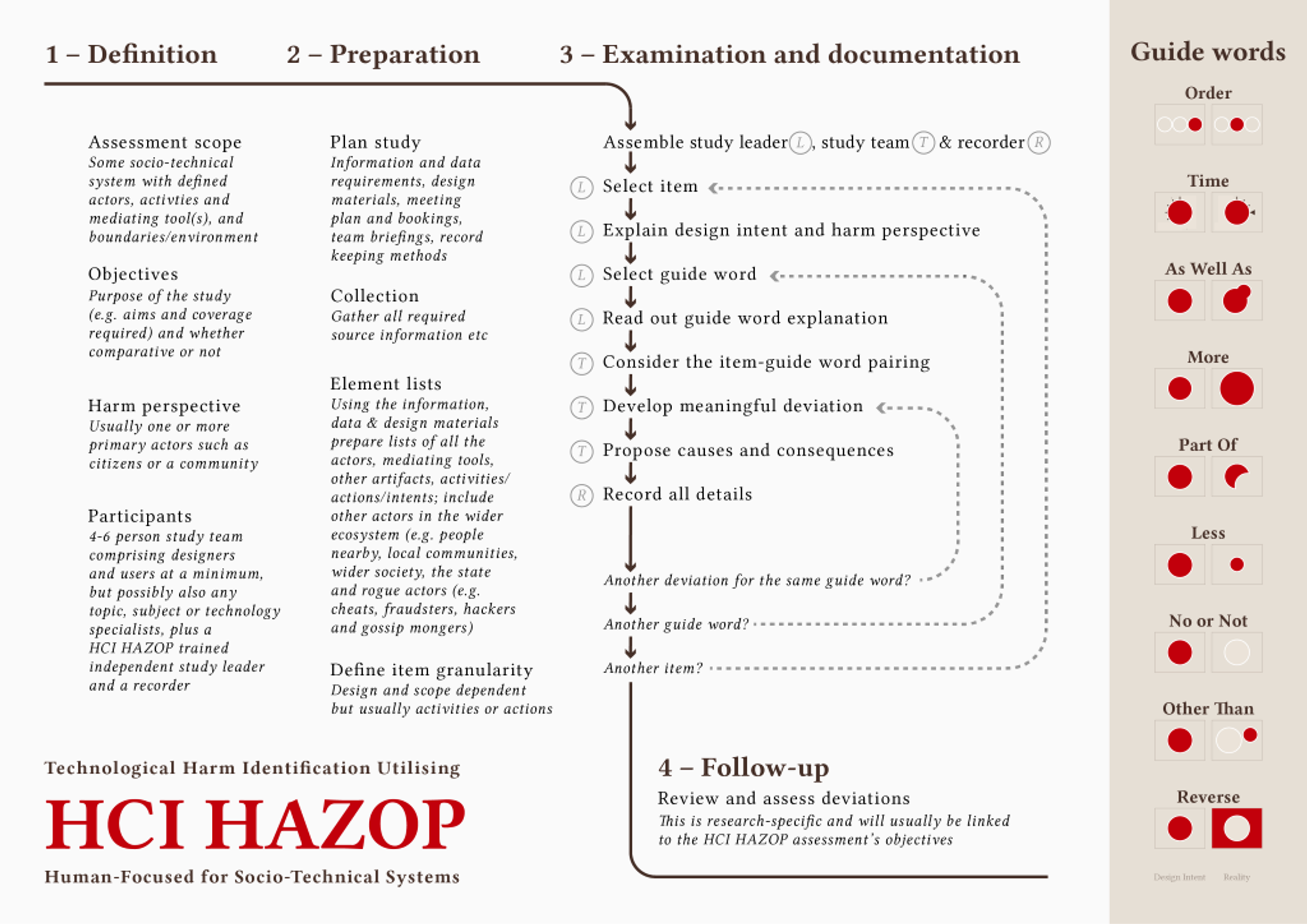
HCI HAZOP: A systematic method to identify harms in socio-technical systems
Inclusive Design

Abstract
HCI-focused collaborative brainstorming approach to identify deviations from design intent that harm people.
Method
Initial feasibility studies were undertaken to explore the viability and usefulness of the hazard identification method HAZOP to identify harmful effects. These established potential merit in the method leading to two subsequent pilot studies, undertaken as virtual workshops, to assess the method’s viability for use within HCI.
Takeaways
The developed adaption HCI HAZOP demonstrates the method’s promise for identify human-centric undesirable consequences, even by novel practitioners without any prior training.
The investigation, design, creation and use of new technologies and changes to existing technological systems have consequences, some of which may be unexpected, and some of which are undesirable. Despite widespread agreement on the importance of identifying harms, doing this in practice is very challenging and seems to need greater attention. In response to a need to develop some example problems which might occur with digital technologies, we investigated whether an existing ‘hazard’ identification method could be adapted for use in HCI to focus on harms affecting people in socio-technical systems.
We applied and adapted the well-established systematic Hazard and Operability assessment (HAZOP), which is an inductive, bottom-up, methodology which appeared to be a good fit for complex socio-technical systems, where ‘deviations’ from intent arise not only from individual and community use of technologies, but also from the wider ecosystem over which there can be little control. HAZOP is relatively simple and intuitive compared with other risk management techniques, so we wondered how we could use this for our lightly-defined digital intervention concepts.

Whilst HAZOP has been used in many different types of, especially-safety critical, systems including in software engineering, its use for human-centric HCI research had not been thoroughly investigated. The HAZOP assessment is a group activity examining design artefacts defining the ‘intentions’ which are the desired or specified range of behaviours which fulfil requirements. HAZOP uses a guide word approach where a standard set of words are applied systematically in turn to each intent in a deliberate search for possible deviations. As each deviation is identified, possible causes and their consequences are also considered.
This work developed HCI HAZOP, a more human-orientated version of HAZOP, where the focus is on harm impacts from the perspectives of the people involved. It was trialled, evaluated and refined to foreground people as contributing actors rather than sources of system errors, recognising and considering influences from, and effects on, other elements in the socio-technical system. The project’s outputs include the creation of HCI-specific guide word descriptions and novel diagrammatic representations.
Highlights
This research was published as part of 2024 ACM CHI conference.
Hostile Systems: A Taxonomy of Harms Articulated by Citizens Living with Socio-Economic Deprivation